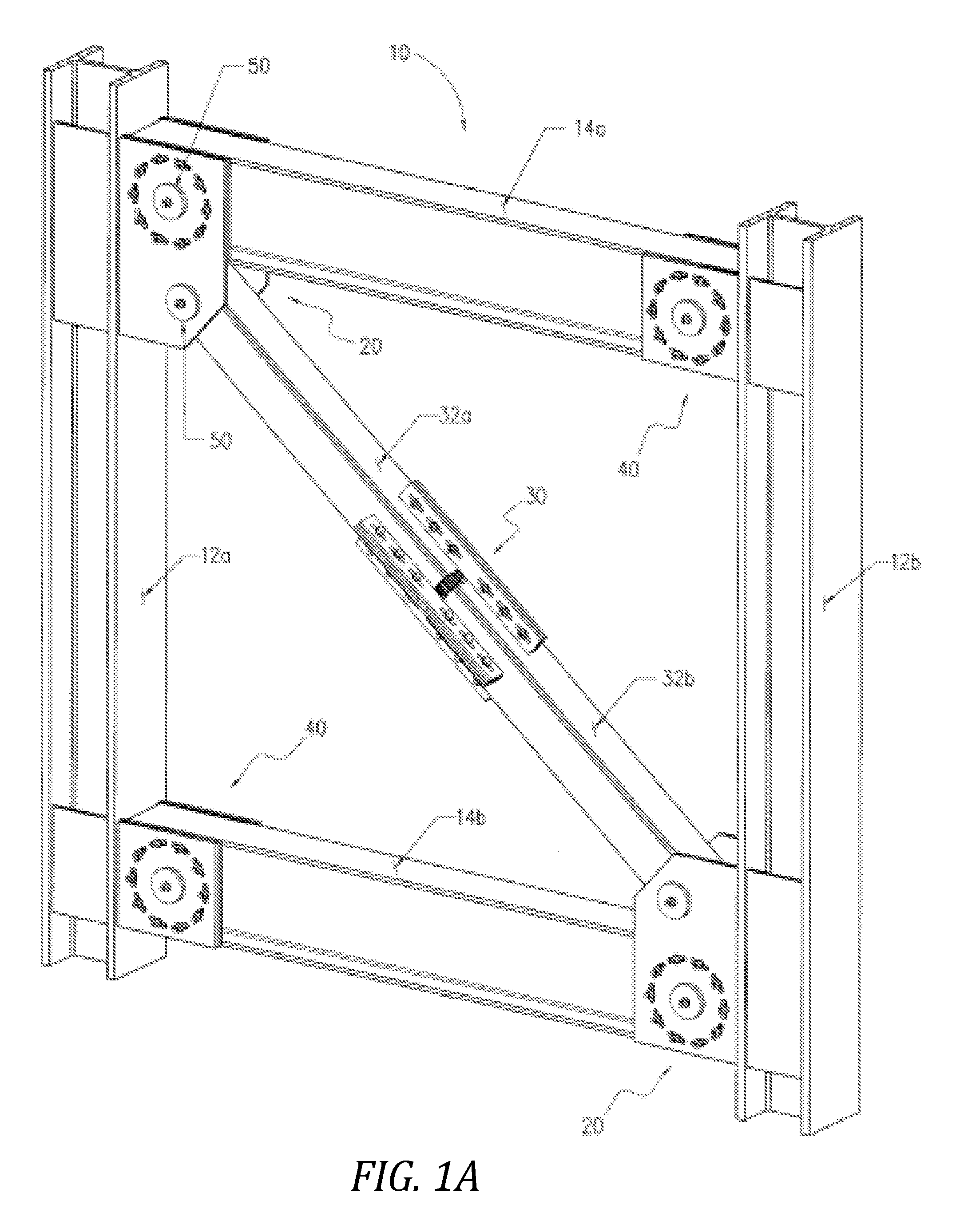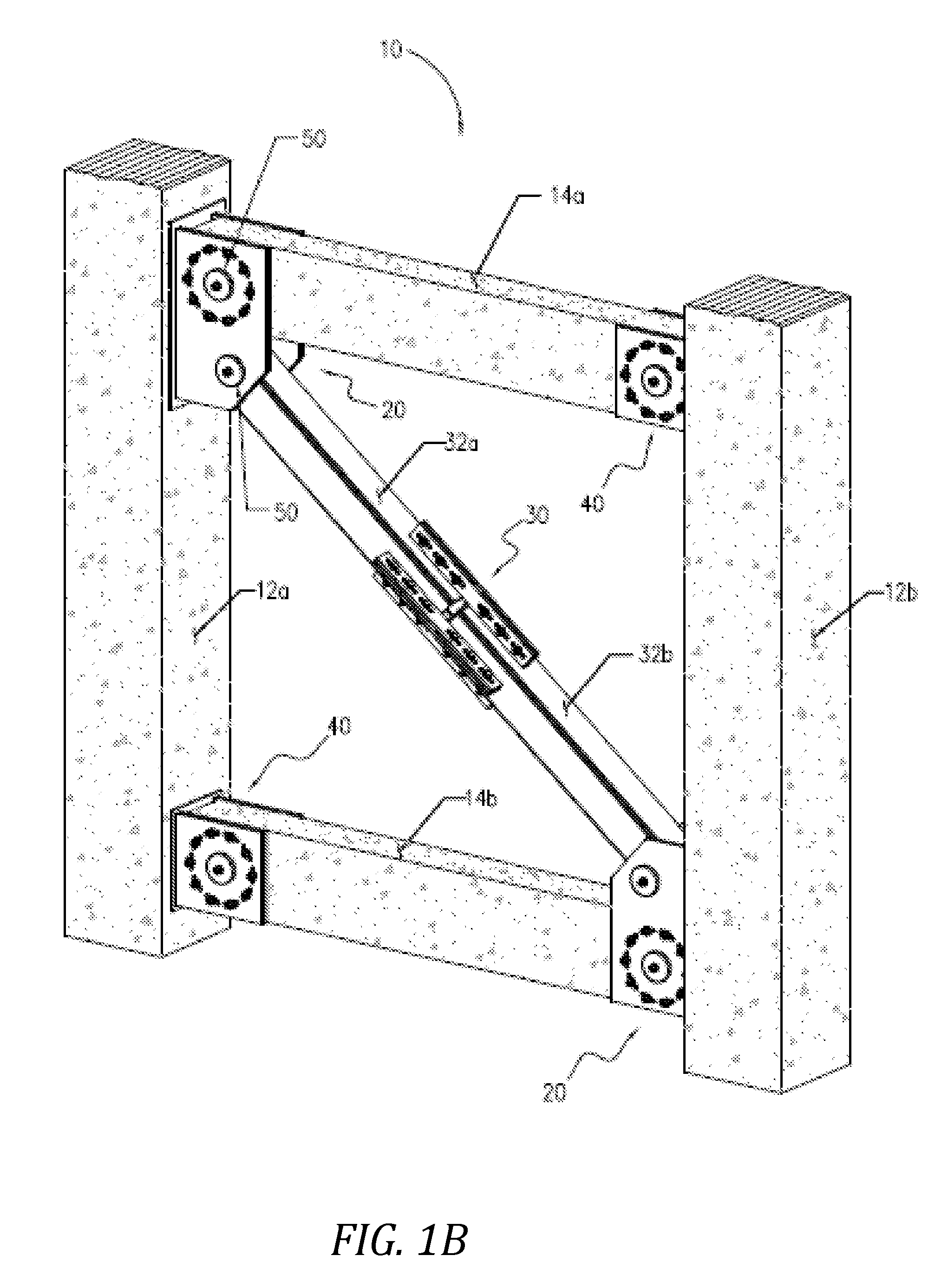Seismic structural device
a technology of seismic structure and frame, which is applied in the direction of buildings, buildings, buildings, etc., can solve the problems of inability to use moment-resisting frames in taller structures, inability to meet the requirements of structural materials, and high cost, so as to soften the structure, and improve the dynamic characteristics of structures
- Summary
- Abstract
- Description
- Claims
- Application Information
AI Technical Summary
Benefits of technology
Problems solved by technology
Method used
Image
Examples
Embodiment Construction
[0071]Reference will now be made in detail to an implementation in accordance with a pin-fuse frame consistent with the present invention as illustrated in the accompanying drawings. A pin-fuse frame consistent with the present invention enables a building or other structure to withstand a seismic event without experiencing significant inelasticity or structural failure at the pin-fuse frame. The pin-fuse frame may be incorporated, for example, in a beam and column frame assembly of a building or other structure subject to seismic activity and improves a structure's dynamic characteristics by allowing the joints to slip under extreme loads. This slippage changes the structure's dynamic characteristics by lengthening the structure's fundamental period and essentially softening the structure, allowing the structure to exhibit elastic properties during seismic events. By utilizing the pin-fuse frame, it is generally not necessary to use frame members as large as those typically used fo...
PUM
 Login to View More
Login to View More Abstract
Description
Claims
Application Information
 Login to View More
Login to View More - R&D
- Intellectual Property
- Life Sciences
- Materials
- Tech Scout
- Unparalleled Data Quality
- Higher Quality Content
- 60% Fewer Hallucinations
Browse by: Latest US Patents, China's latest patents, Technical Efficacy Thesaurus, Application Domain, Technology Topic, Popular Technical Reports.
© 2025 PatSnap. All rights reserved.Legal|Privacy policy|Modern Slavery Act Transparency Statement|Sitemap|About US| Contact US: help@patsnap.com



